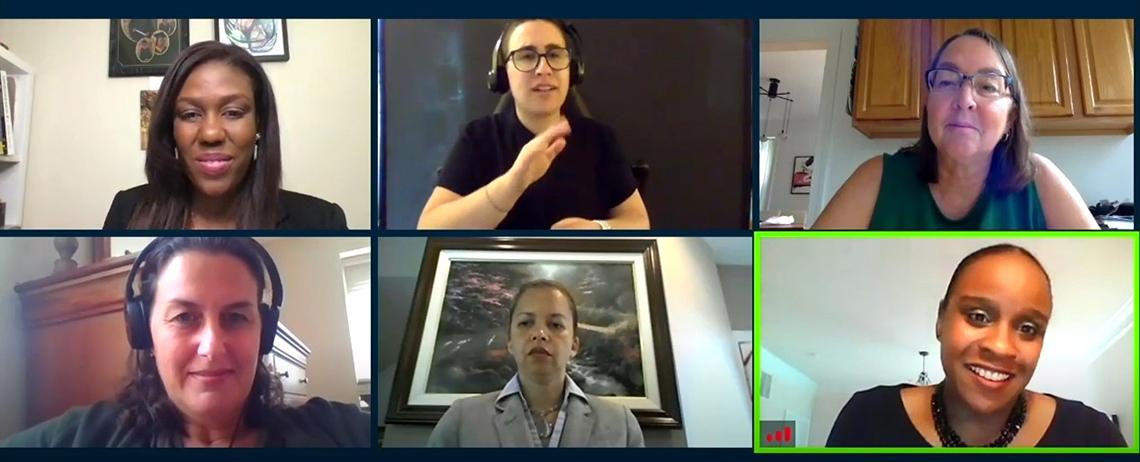Women in Science
Four Scientists Discuss Balancing Work, Life During Pandemic
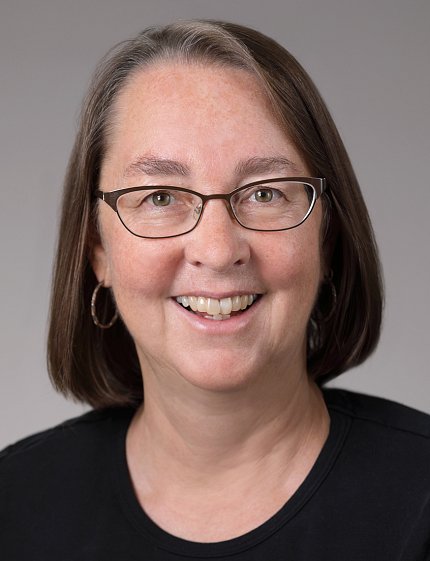
Many ingredients go into the stew of life. Women with demanding careers try to take equal parts work and family time, mix in adequate sleep and exercise and sprinkle in some personal time. Often, though, certain areas of our lives heat up while others sit on a slow simmer. In normal times, it’s tough cooking on all these burners at once, let alone during a pandemic.
Four NIH women scientists recently discussed how they’re juggling their professional and personal responsibilities amid the altered schedules and uncertainty of the covid pandemic. The virtual lecture, part of the Office of Equity, Diversity and Inclusion’s Whole Woman seminar series, was moderated by Dr. Erika Barr, director of community college programs in NIH’s Office of Intramural Training and Education, who helped viewers get to know the women behind the science.
Dr. Audrey Thurm, whose three children are in middle school, high school and college, described the challenge of balancing work with being a mom and a wife. “The reality is, for a lot of us, a lot of what we do involves deep thinking and time to actually write,” she said. Getting it all done sometimes involves sending emails at unusual hours.
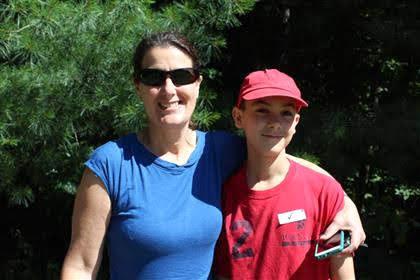
Thurm, a child clinical psychologist who directs NIMH’s Neurodevelopmental and Behavioral Phenotyping Service, said her schedule continues to evolve during covid times. She used to get more work done after her kids went to bed, but now she gets a lot done while her kids do their virtual schooling.
Dr. Paule Joseph, who is a caregiver to her parents and a chronically ill sister, said she struggles to balance all her obligations. A Lasker Clinical Research Scholar, NIH distinguished scholar and chief of the sensory science and metabolism unit at NIAAA/NINR, she finds inspiration by surrounding herself with supportive colleagues.
“The way I keep myself balanced and sane is by being diligent about my own spiritual practice,” said Joseph, who meditates daily. She also tries to make time for walks and other activities she enjoys.
Dr. Courtney Fitzhugh finds comfort in her faith. Also a Lasker scholar, Fitzhugh, an NHLBI investigator working on sickle cell disease, said making more time for her faith has improved her focus and productivity. Recently married, she also prioritizes spending quality time with her husband. The two have spent a lot of time lately bike-riding together on trails behind their house that, she has discovered, go all over D.C.
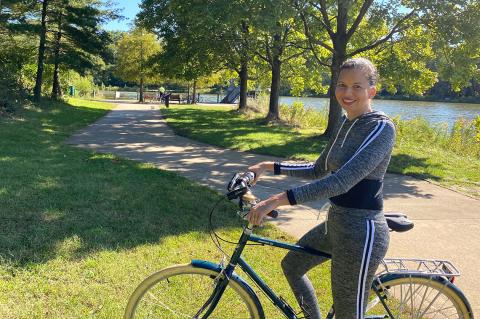
Dr. Gisela Storz has steadied herself with exercise during the pandemic. “During this covid time, I’m doing an awful lot of walking,” said Storz, an NIH distinguished investigator who works on gene regulation at NICHD. “Whenever I’m tired of Zoom meetings, I walk, and I sometimes try to do meetings on the phone while I walk. That’s helped a lot.”
Until recently, Storz said, she has had severe empty-nest syndrome. Now, during covid times, her three adult children are living at home again. While she enjoys the quality time together, as the dishes pile up daily in the sink, she’s starting to miss being an empty-nester.
All four women discussed increased feelings of guilt and insecurity during the pandemic. With altered schedules and competing responsibilities, they’ve wondered: “Have I been a good enough scientist, mom, wife, friend? Am I taking care of myself?”
It’s a tough time for parents working at home while managing their kids’ schoolwork at the same time, noted Thurm. Minutes earlier, she shook her head at her off-camera daughter. “I’m experiencing it at this moment!”
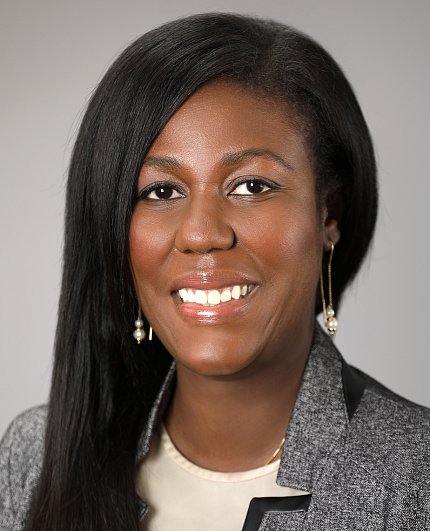
Joseph, who previously lived in New York, said she has grappled with both the grief of losing loved ones to covid and the guilt of being unable to be there to help or attend the funerals. But she finds comfort looking for the blessings in difficult times. “Many times, we rush into the lab, into the Clinical Center, and we don’t spend as much time as a family, bonding,” she said, appreciating the quality family time of recent months.
“We cannot be doing it all,” said Thurm, who recommended taking mental health breaks. Meditate or take a few deep breaths, step outside, call a friend or put on some music. “Take a moment to recognize ourselves and connect our brains with our bodies,” she said. “We have to be in this for the marathon; there cannot be sprints right now.”
When times get tough, they remind themselves of why they’re in this field. One of the greatest rewards, they agreed, is mentoring. Joseph said she finds it especially gratifying to mentor women of diverse backgrounds, “showing that women of science don’t all look the same.”
Storz, who has worked at NIH for nearly 30 years, has enjoyed watching high school students she once mentored return to NIH as investigators. Fitzhugh agreed: “You’re giving others the tools that will help them succeed,” she said. “I love that because I’m a woman, that attracts other young women to come. I can see myself in them and it’s exciting to go through that process with them.”
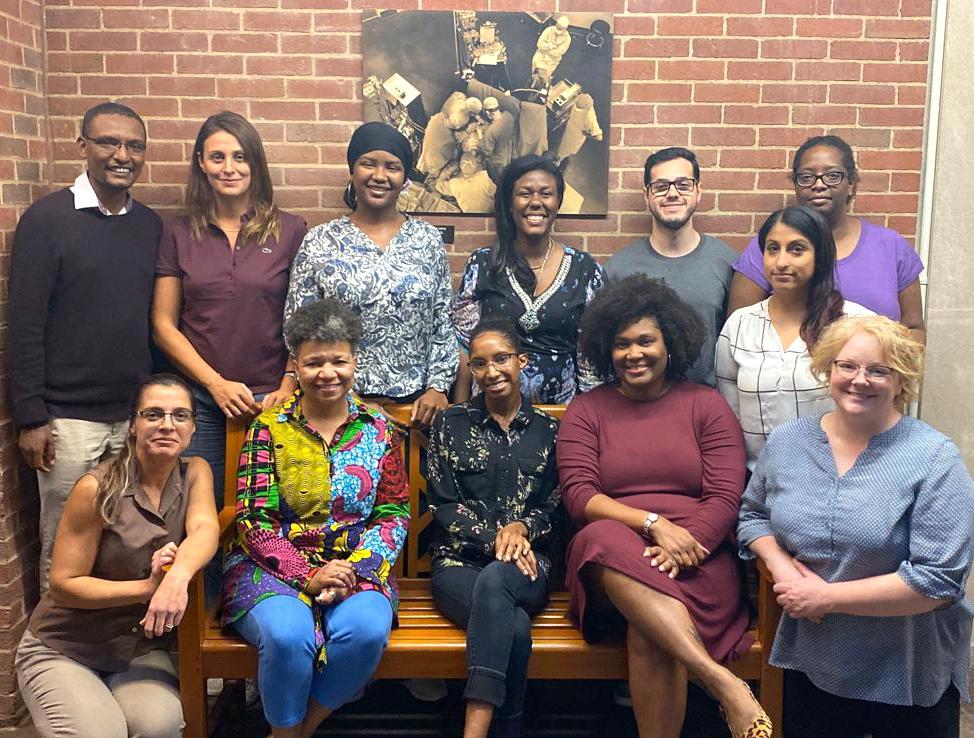
What advice would they give to young women scientists starting out? Be persistent. Keep trying, keep pushing.
“Learn what you’re passionate about, what makes you happy,” said Fitzhugh, “so you’ll be excited to go to work every day.”
Mentoring is particularly important right now, said Thurm, as everyone struggles to balance their lives with their careers during the pandemic. It’s important “to be there doing it, showing women that it can be done, being a role model for the next generation.”

